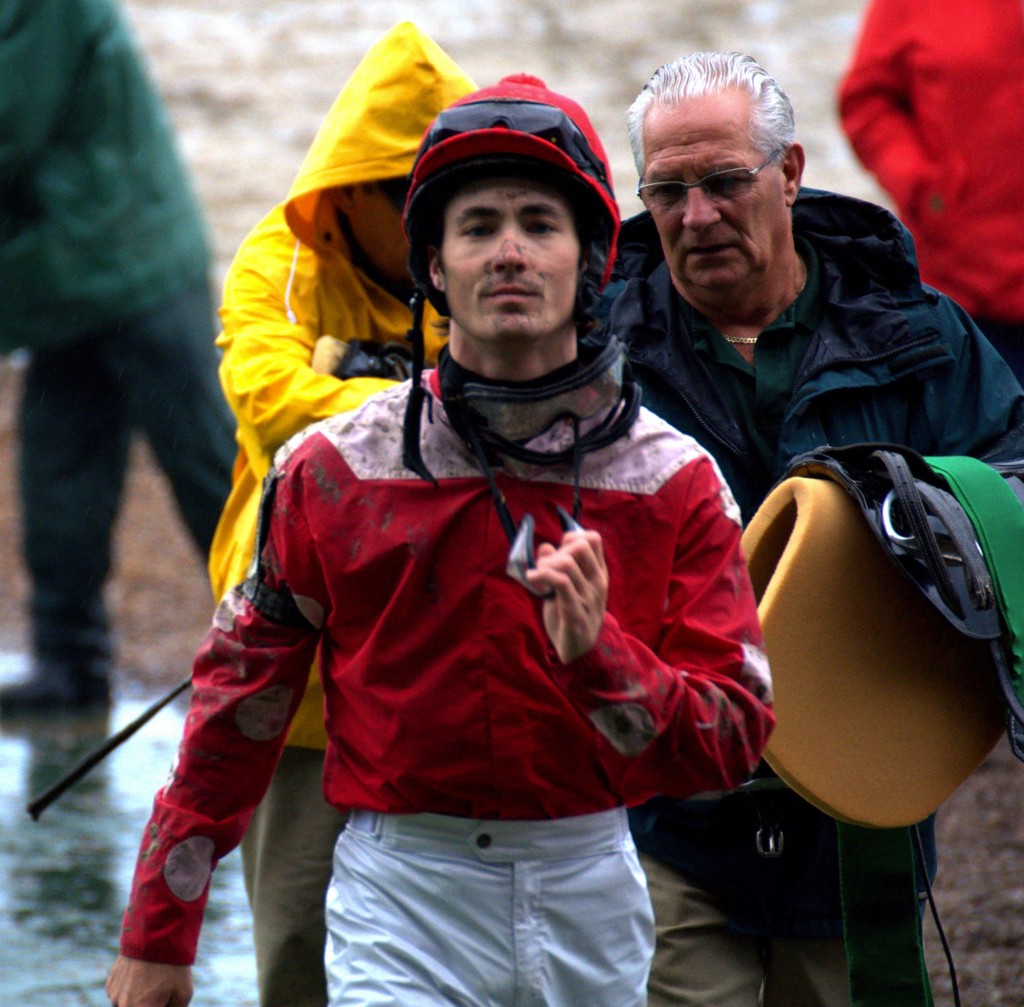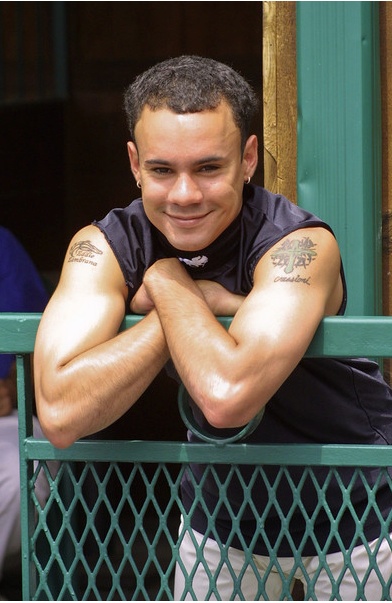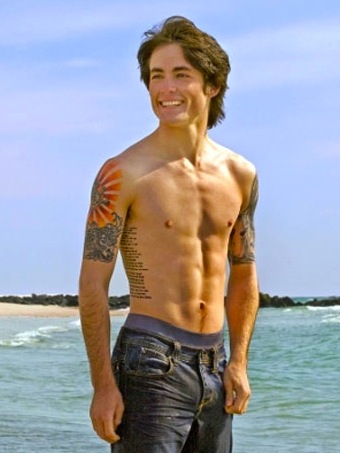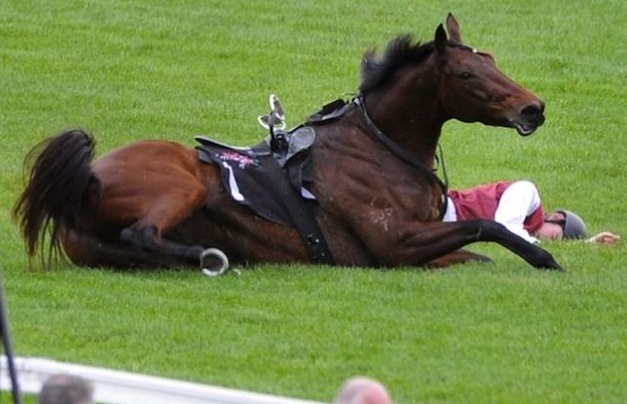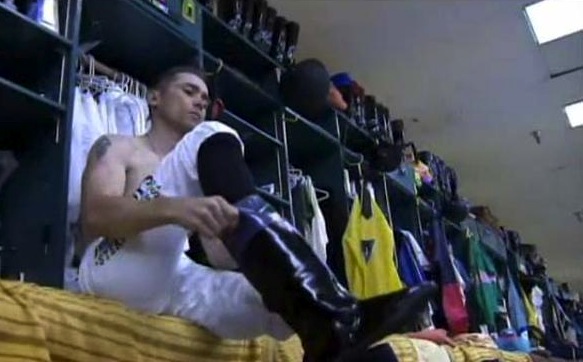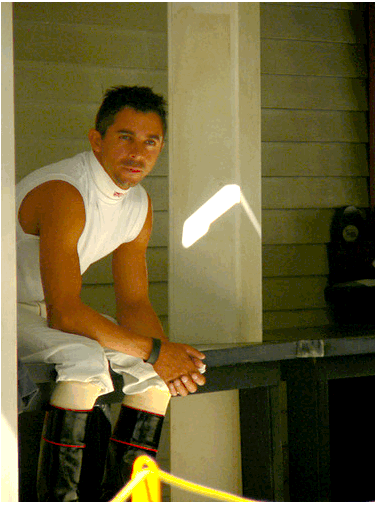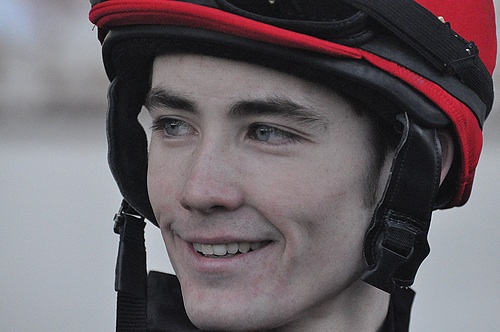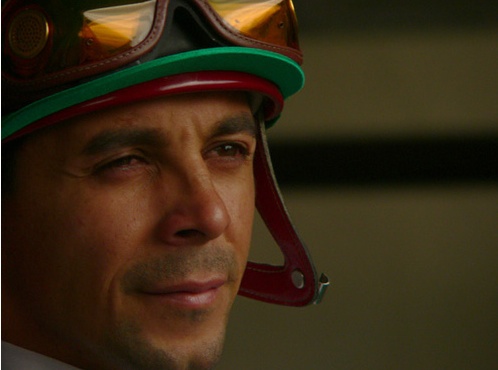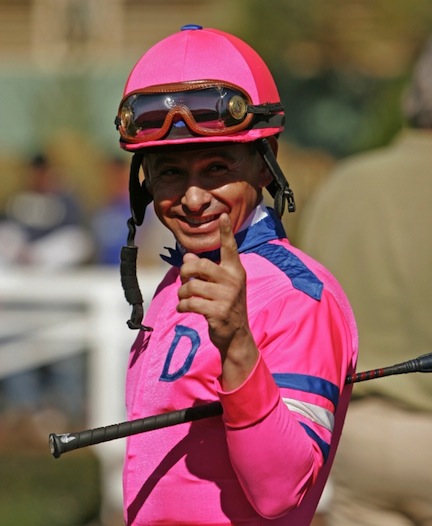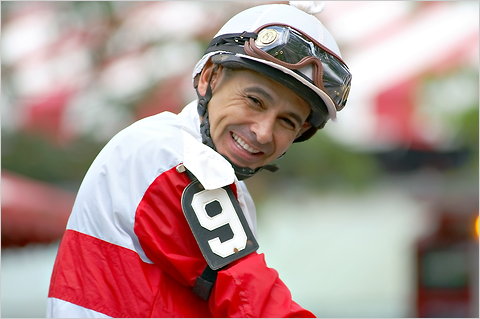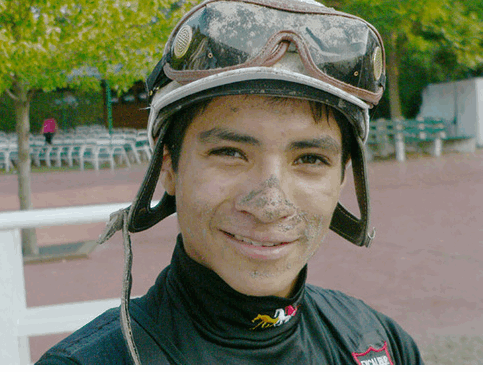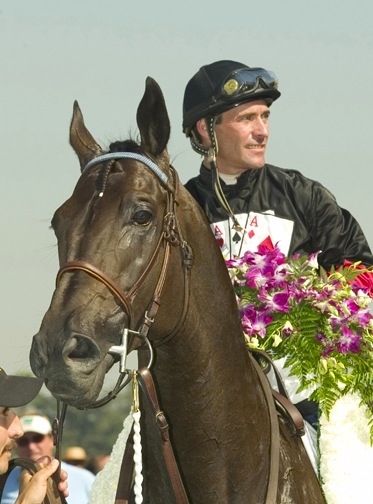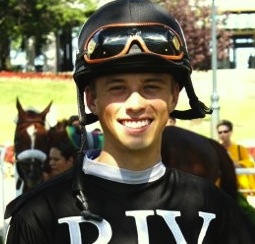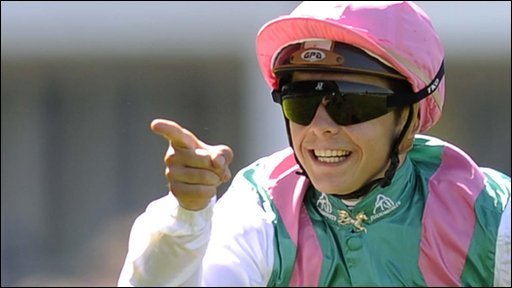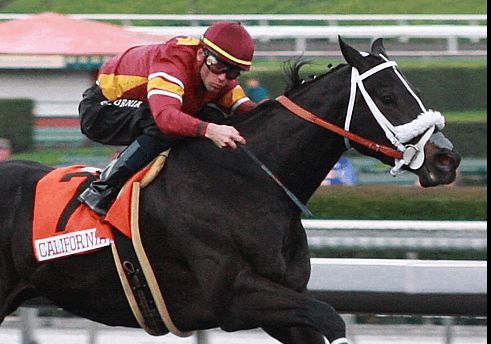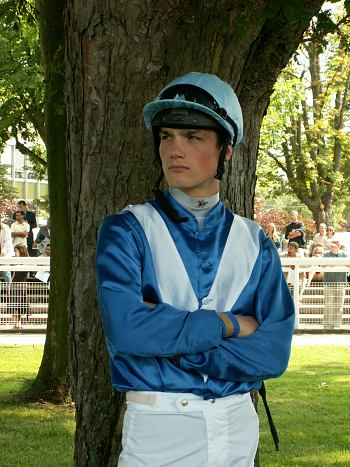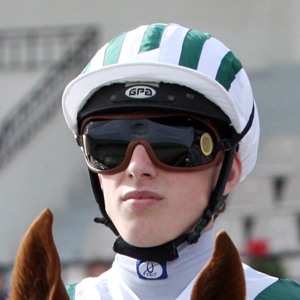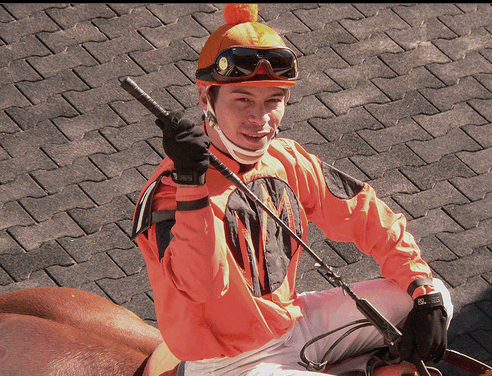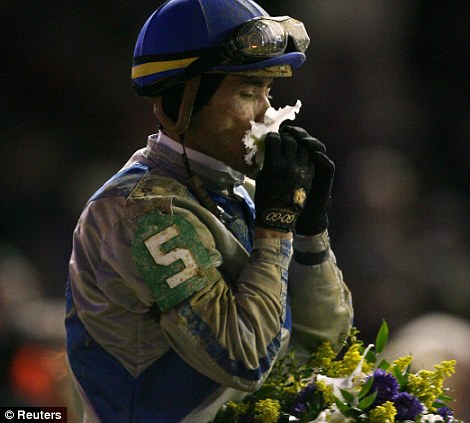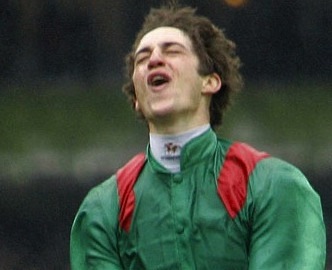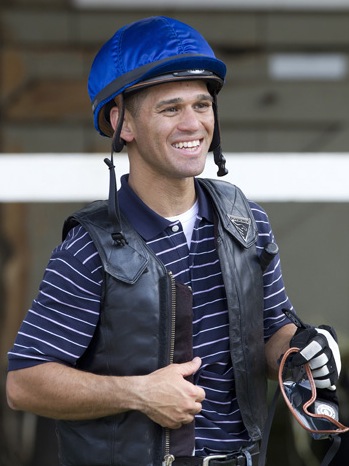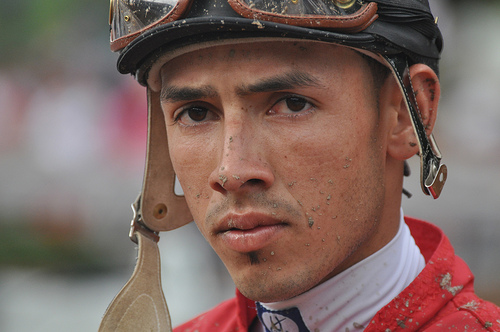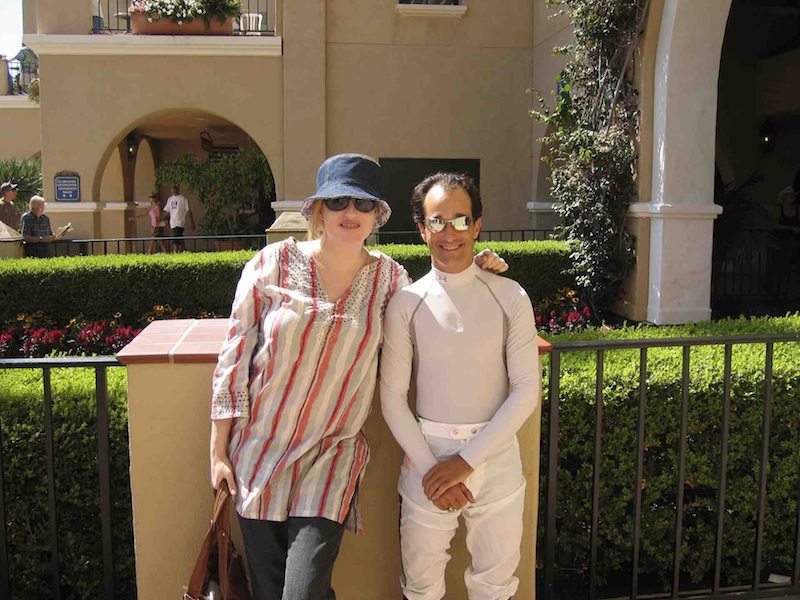I’m unapologetic in my love of jockeys. For you, maybe the horse is the thing. The jockeys are weird – miniature, enigmatic humans in baggy knickers and candy colored silks. Scoffed at for their size, these humans are freaks of flexibility and endurance, shrewd tacticians with finely tuned internal clocks and almost spooky sensorial perception. They have the courage of gladiators, the balance of gymnasts on beam and the hand-eye coordination of NASCAR drivers.
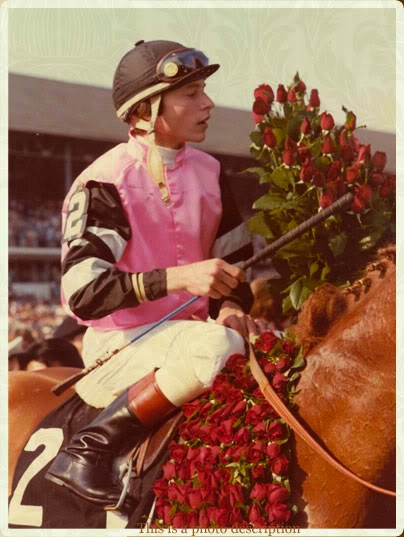 My first jockey love was a teenage dreamboat named Steve “The Kid” Cauthen. He was as adorable as he was non- threatening and I was deeply in love with him. In his second year of racing, Steve Cauthen was the nation’s winningest jockey and was on the cover of Sports Illustrated (I still have my copy). He was 17 and looked 13 when he and his chestnut mount, Affirmed, won the Triple Crown.
My first jockey love was a teenage dreamboat named Steve “The Kid” Cauthen. He was as adorable as he was non- threatening and I was deeply in love with him. In his second year of racing, Steve Cauthen was the nation’s winningest jockey and was on the cover of Sports Illustrated (I still have my copy). He was 17 and looked 13 when he and his chestnut mount, Affirmed, won the Triple Crown.
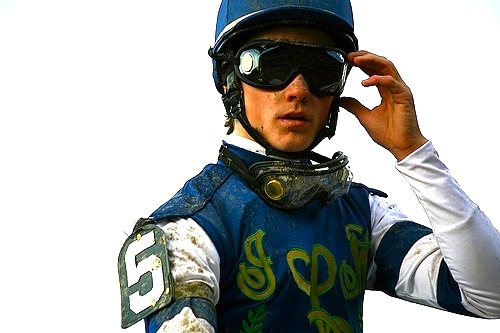
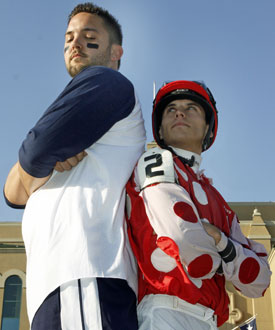 To me, the word “athlete” doesn’t mean Kobe or Tom Brady, it means Laffit Pincay or Garret Gomez. Perhaps it’s precisely because they’re not pampered spokesmodels that jockeys are so kick-ass, hailing from the backwoods of the Pacific Northwest, the bayous of Louisiana, the slums of Panama or the swamps of aradiana. Like cops, miners or circus performers, jockeys have learned to think of themselves as a breed apart – “unsuited for the gentility of everyday life”. The saying goes that, pound for pound, Jockeys are the toughest athletes in the world. Pound for pound, it isn’t even close. Would you call Kobe or Tom Brady tough? How about a 330-pound offensive lineman or a steroidal slugger? When it comes to both mental and physical toughness and playing through pain, the 103 lb. jockey leaves those other sportsmen in the dust – fractured wrist or a broken rib is 3 months of Diet Coke and TV remote for those guys – for a jockey it’s a couple of strips of tape and an aspirin.
To me, the word “athlete” doesn’t mean Kobe or Tom Brady, it means Laffit Pincay or Garret Gomez. Perhaps it’s precisely because they’re not pampered spokesmodels that jockeys are so kick-ass, hailing from the backwoods of the Pacific Northwest, the bayous of Louisiana, the slums of Panama or the swamps of aradiana. Like cops, miners or circus performers, jockeys have learned to think of themselves as a breed apart – “unsuited for the gentility of everyday life”. The saying goes that, pound for pound, Jockeys are the toughest athletes in the world. Pound for pound, it isn’t even close. Would you call Kobe or Tom Brady tough? How about a 330-pound offensive lineman or a steroidal slugger? When it comes to both mental and physical toughness and playing through pain, the 103 lb. jockey leaves those other sportsmen in the dust – fractured wrist or a broken rib is 3 months of Diet Coke and TV remote for those guys – for a jockey it’s a couple of strips of tape and an aspirin.
Sure they look shrimpy, but under the silk blousons, jockeys are superbly conditioned athletes, sinewy and cut, with zero body fat. They are physical specimens of brute strength packed into tiny frames, because an 118 lb. weakling cannot handle a 2 year old, 1400 lb., erratic animal running at speeds up to 40 mph in tightly packed groups.
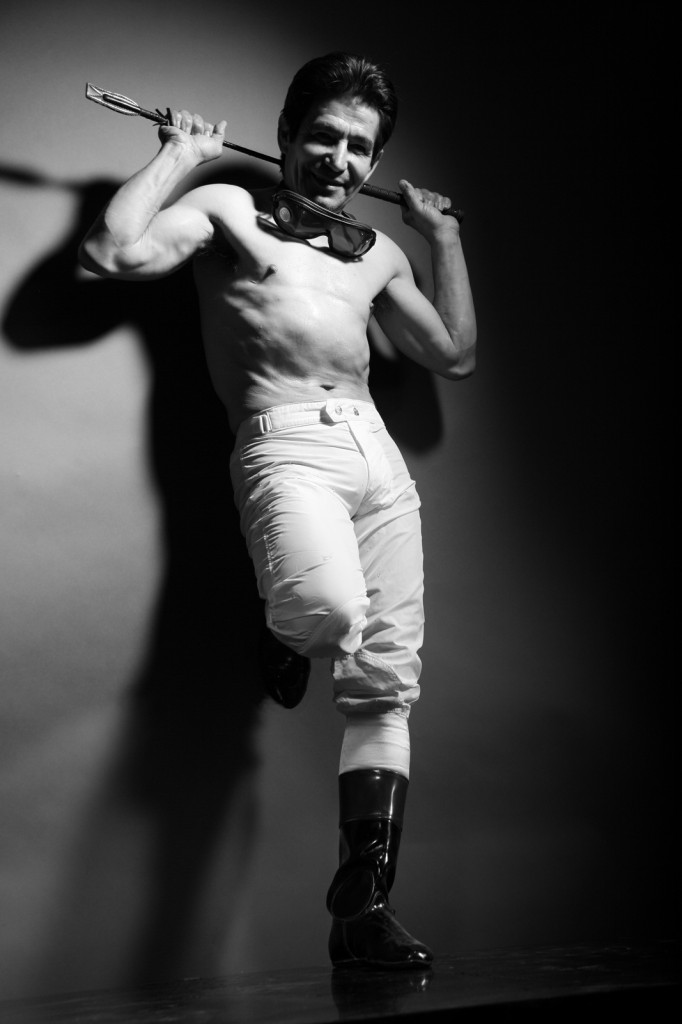 On the racetrack, jockeys viefor the spot on the rail, their puny bodies in matchbook-thin Kevlar vests and 8 ounce helmets, waiting to be flipped over or thrown into the oncoming path of the charging herd. Thoroughbred colts are nervous, sexually perturbed, high-strung 19th-century speed machines, raring to go, literally chomping at the bit, shoved into narrow slots then released like the hounds. They blast off, wild-eyed around the track, kicking up clouds of dirt, froth spewing from their bitted jaws. Baby horses are easily spooked, bolting, kicking, bucking and biting. A horserace is an exercise in controlled chaos, the jockey setting the pace, planning a strategy, anticipating the competitors, gauging gaps in the flow of traffic, always a bobble or stumble away from being tossed head over heels onto the track and into oncoming traffic. Called the “highest risk sport for dying”, serious injury is not an ‘if’, it’s a ‘when’. Not pulled hamstrings or torn rotator cuffs, but the kind of shattering of bones, crushing of clavicles, head and necks seen in high-speed auto wrecks. n 2008, jockey Tyler Blaze crushed his face and lost partial sight in one eye when a horse’s face collided with his face. Another young jockey was trampled to death by horses in a spill at the Pomona Fairplex track at the LA County Fair. A 21 year old Irish jockey was killed when he pulled up his mount and the horse swerved to the right, catapulting him out of the saddle and into a wooden stake.
On the racetrack, jockeys viefor the spot on the rail, their puny bodies in matchbook-thin Kevlar vests and 8 ounce helmets, waiting to be flipped over or thrown into the oncoming path of the charging herd. Thoroughbred colts are nervous, sexually perturbed, high-strung 19th-century speed machines, raring to go, literally chomping at the bit, shoved into narrow slots then released like the hounds. They blast off, wild-eyed around the track, kicking up clouds of dirt, froth spewing from their bitted jaws. Baby horses are easily spooked, bolting, kicking, bucking and biting. A horserace is an exercise in controlled chaos, the jockey setting the pace, planning a strategy, anticipating the competitors, gauging gaps in the flow of traffic, always a bobble or stumble away from being tossed head over heels onto the track and into oncoming traffic. Called the “highest risk sport for dying”, serious injury is not an ‘if’, it’s a ‘when’. Not pulled hamstrings or torn rotator cuffs, but the kind of shattering of bones, crushing of clavicles, head and necks seen in high-speed auto wrecks. n 2008, jockey Tyler Blaze crushed his face and lost partial sight in one eye when a horse’s face collided with his face. Another young jockey was trampled to death by horses in a spill at the Pomona Fairplex track at the LA County Fair. A 21 year old Irish jockey was killed when he pulled up his mount and the horse swerved to the right, catapulting him out of the saddle and into a wooden stake.
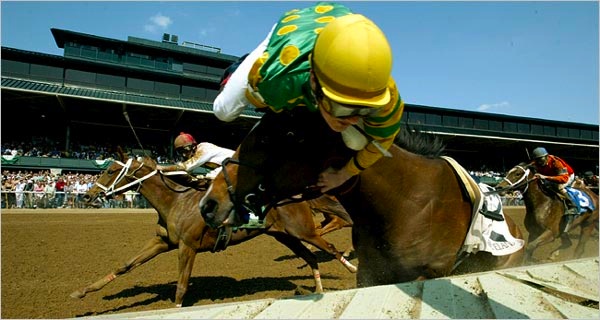
The Jockeys’ Guild reports that more than 100 jockeys were killed from 1950 through the mid-1980s. The average jockey is injured three times per year. On average, in North America, there are 5.6 jockey fatalities per year.
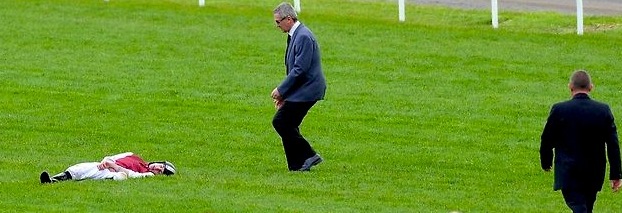 (Both horse and jockey are fine).
(Both horse and jockey are fine).
Unlike almost every other type of professional athlete, jockeys have no contracts (guaranteed or otherwise), and if they’re not in the money, all they get is a $150 mount fee. Jockeys have to grovel for mounts, endure being cruelly stripped of mounts, disqualified by stewards and heckled by gamblers. It’s a zero sum game that does not allow for sentiment. Hobbled and scarred, jockeys work 7 days a week with no off season, no vacation, no union, no healthcare plan or pension. Jockeys aren’t treated anywhere near as well as the horse and a jockey’s life has nothing to do with the lives of the owners and trainers, or the be-hatted lunatics guzzling juleps in the Turf Club, encased in a bubble of ersatz Southern elegance.Horse racing is the dinosaur of American sporting life, and the track is a noir movie of stogie chomping wise guys, bulbous nosed codgers, “Swingers” (the movie) types, hipsters, coots, hobos, criminals, the very rich and the very poor. A jockeys life is glamor,romance and fortune, and a seedy, primordial ooze of filth and corruption. To instinctively embrace all the dangers and disparagement, the deprivation and the pain…..to endure all that and triumph still, for that defining moment when adrenaline meets nerve and spirit, is that thing people spend their entire lives seeking.
I just love horseracing, and the jockeys are half of that. There is something about the horse and rider that is unparalleled in sports: the scary/lethal power of the thoroughbred and its sphinx-like, candy-colored rider, moving with rhythmic grace as they fly down the yellow ribbon of the track, kicking up a rooster tail of dirt, before exploding into the clouds.
Permanently Disabled Jockeys Fund
My DEDICACES JOCKEYS
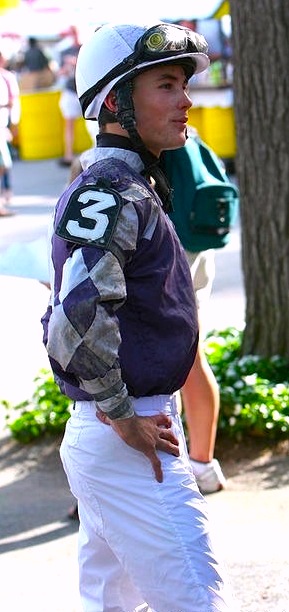
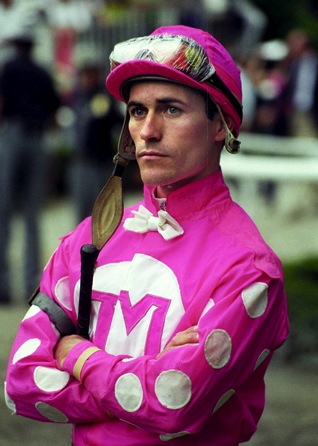
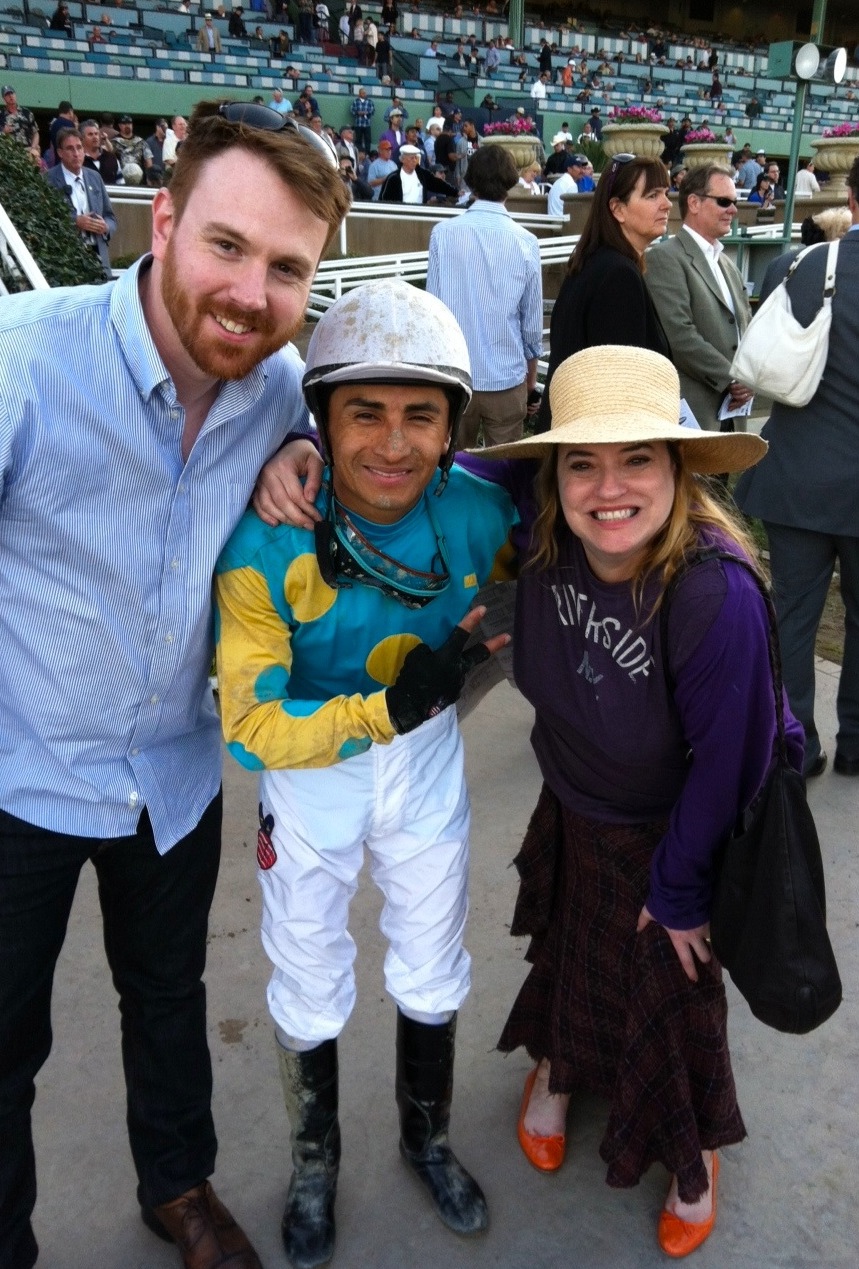
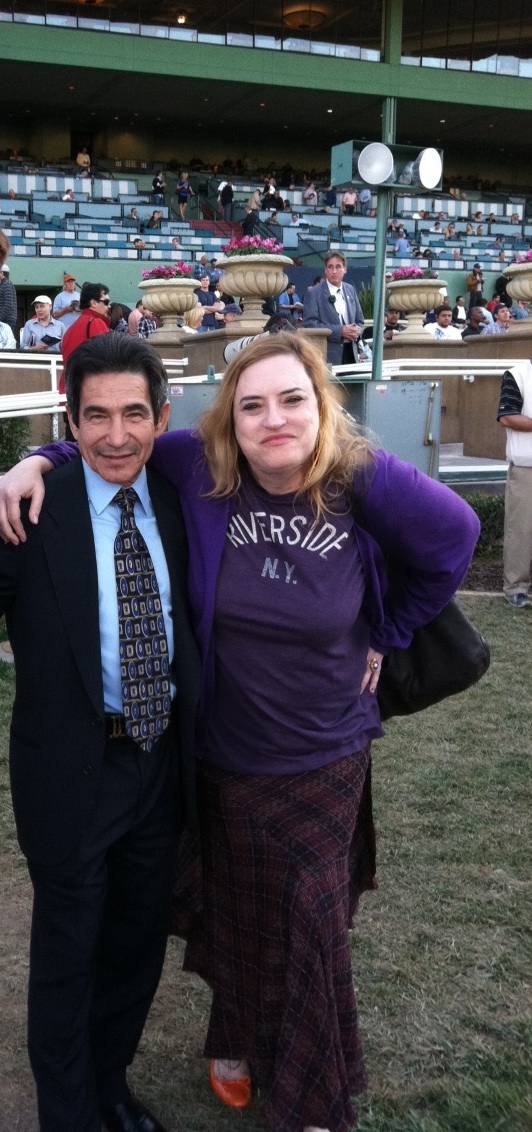
with Laffit Pincay at Santa Anita
